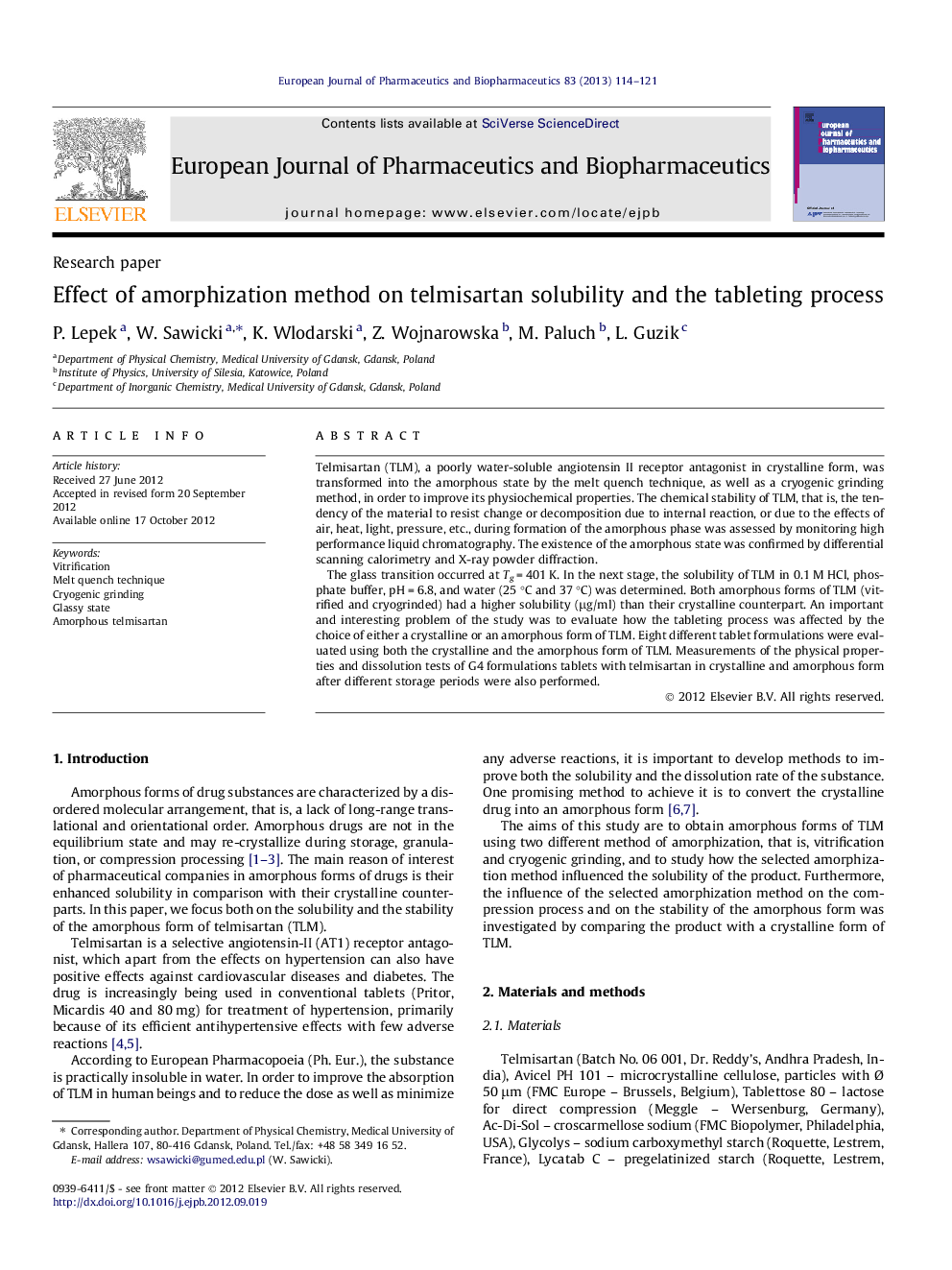| Article ID | Journal | Published Year | Pages | File Type |
|---|---|---|---|---|
| 2083803 | European Journal of Pharmaceutics and Biopharmaceutics | 2013 | 8 Pages |
Telmisartan (TLM), a poorly water-soluble angiotensin II receptor antagonist in crystalline form, was transformed into the amorphous state by the melt quench technique, as well as a cryogenic grinding method, in order to improve its physiochemical properties. The chemical stability of TLM, that is, the tendency of the material to resist change or decomposition due to internal reaction, or due to the effects of air, heat, light, pressure, etc., during formation of the amorphous phase was assessed by monitoring high performance liquid chromatography. The existence of the amorphous state was confirmed by differential scanning calorimetry and X-ray powder diffraction.The glass transition occurred at Tg = 401 K. In the next stage, the solubility of TLM in 0.1 M HCl, phosphate buffer, pH = 6.8, and water (25 °C and 37 °C) was determined. Both amorphous forms of TLM (vitrified and cryogrinded) had a higher solubility (μg/ml) than their crystalline counterpart. An important and interesting problem of the study was to evaluate how the tableting process was affected by the choice of either a crystalline or an amorphous form of TLM. Eight different tablet formulations were evaluated using both the crystalline and the amorphous form of TLM. Measurements of the physical properties and dissolution tests of G4 formulations tablets with telmisartan in crystalline and amorphous form after different storage periods were also performed.
Graphical abstractComparison of crystalline and amorphous forms of telmisartan.Figure optionsDownload full-size imageDownload high-quality image (57 K)Download as PowerPoint slide
